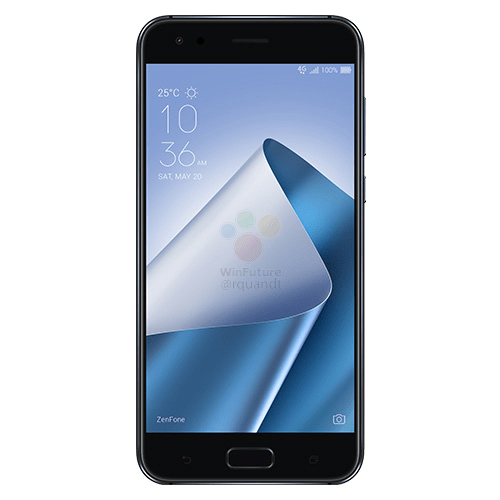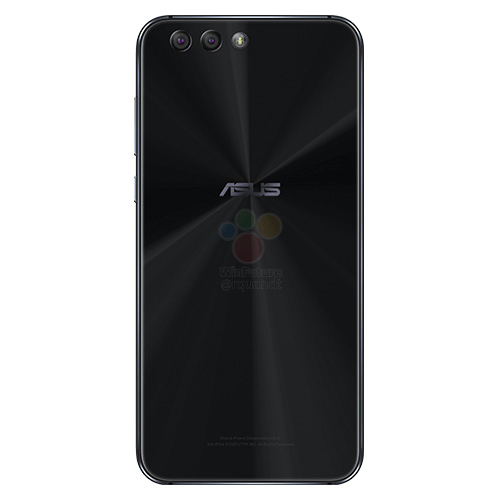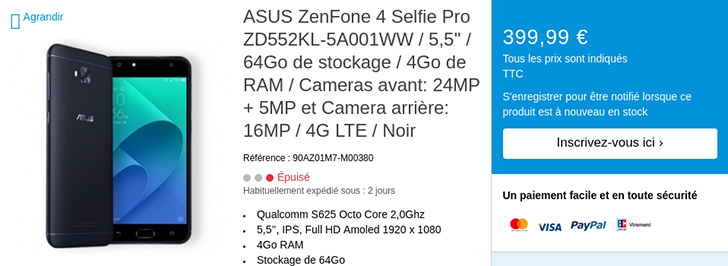
A range of devices
We knew we were getting a range of ZenFone 4 devices, but not when they would arrive, how powerful they would be, or what they would look like. After unveiling the smartphones at a global launch event in Taiwan, the company introduced the Zenfone 4 and Zenfone 4 Pro as the flagship devices. Joining the options of mid-range devices are the Zenfone Selfie, and Zenfone Selfie Pro, along with the Zenfone Max, and Zenfone Max Pro.
Price and availability
The ZenFone 4 series is officially available for purchase in North America. The ZenFone 4 Pro comes in at $600, while the Zenfone 4 will cost you $400 for both the Midnight Black and Moonlight White color variants. The 5.5-inch ZenFone 4 Max is slightly cheaper with a price of $200 and the ZenFone 5.2-inch — both in Deepsea Black — is $170. All models can be purchased from the AsusSUS Store, Amazon, Best Buy, B&H, Newegg, and ABT, among others.
ZenFone 4, Zenfone 4 Pro
Asus revealed images of the ZenFone 4 on its French site, alongside full details about the device. But based on the launch, the ZenFone 4 features a 5.5-inch AMOLED display, Qualcomm Snapdragon 660/630 processor, 6GB of RAM, 64GB of internal storage, and a pair of cameras at the rear rated at 12 and 8 megapixels. The front-facing camera is eight megapixels as well, the battery capacity is 3,300mAh, and the phone should be available in both black and white. In France, it will run 500 euros, or about $592.
The listing mostly falls in line with previous rumors. In July, a Geekbench results page for a device named “Z01KD” popped up over at Slashleaks, offering a little information on the core of the upcoming line of Asus smartphones. The Z01KD model number was previously linked to the ZenFone 4.
The results mentioned 4GB of RAM, as well as an octocore Qualcomm processor clocked at 2.21GHz — indicating what was believed to be a mid-range Snapdragon 660 chipset. According to the benchmarks, the device was running Android 7.1.1 Nougat.
Now, as for those scores: the Z01KD achieved an 855 in single-core testing and 4,127 in multicore. For comparison’s sake, the ZenFone 3 — which sported Qualcomm’s last-gen 625 chipset — scored 838 and 4,016 in single- and multi-core testing, respectively. It would appear modest improvements have been made to performance, but we’ll have to wait until we get the device in our hands to determine if any of those changes have a significant effect on real-world usage.
The latest look comes from a tweet posted by mobile reporter Evan Blass, who leaked a photo of the ZenFone 4 along with images of the other three models.

In terms of the Zenfone 4 Pro, there aren’t too many differences when compared to the Zenfone 4. The Pro packs a Snapdragon 835 processor, 6GB of RAM, and 128GB of internal storage. It also comes with a 12-megapixel camera with a sensor for 2X zoom and an 8-megapixel front-facing camera. The battery capacity for the Pro is more powerful than the Zenfone 4 at 3,600mAh.
ZenFone 4 Max, Zenfone 4 Max Pro

First launching in Russia, the ZenFone 4 Max is now available for purchase in the U.S. and Canada. The device utilizes a 5.5-inch with a 1,280 x 720-pixel display and runs Android 7.0. It ships with Qualcomm’s Snapdragon 430 chipset and Adreno 505 graphics processor. The device also includes 3GB of RAM, and up to 64GB of internal storage which is expandable up to 256GB with a microSD card. The triple-slot tray allows users to install two SIMs along with the microSD card. The ZenFone 4 Max has dual cameras, this time in the form of 13-and 8-megapixel sensors. It also includes a 120-degree wide angle camera and carries a larger 5,000mAh battery. As for the fingerprint sensor, it is placed at the bottom of the front panel.
The ZenFone 4 Max sports a metal design similar to Apple’s iPhone 7 Plus, and is available in three finishes: Black, gold, and pink. Among the photos leaked by Blass, the image below gives us a far more up close and personal look at the ZenFone 4 Max.

While there isn’t much more information revealed about the ZenFone 4 Max Pro Pro at the global launch event in Taiwan, it will include a dual 16MP f.20 camera on the back and a 16MP f2.0 front-facing camera
ZenFone 4 Selfie and Selfie Pro
Moving on to the ZenFone 4 Selfie and Selfie Pro, these two devices appear to be mostly identical from the outside, with the Pro unsurprisingly featuring slightly better hardware across the board. The Selfie receives a 5.5-inch 720p display, Snapdragon 430 system-on-chip, 4GB of RAM alongside 64GB of internal storage, and a 3,000mAh battery. The device gets its name from its dual front-facing cameras — one rated at 20 megapixels, the other at eight. The rear-facing camera plays second fiddle here, with just one 16-megapixel sensor. The ZenFone 4 Selfie will reportedly sell for 300 euros in France, or $354.
The Selfie Pro swaps the regular Selfie’s processor for a higher-end Snapdragon 625 unit. The same 4GB of RAM and 64GB of storage is on offer, but the 5.5-inch screen is upgraded to 1080p. The cameras are a bit different, too. The front-facing camera features 24- and 5-megapixel sensors, while the shooter around the back remains at 16 megapixels. It should run for about 400 euros, or $473.
More leaked images from Evan Blass show the ZenFone 4 Selfie and Selfie Pro in a variety of color options.
Dual-lens camera
At the launch event, it was revealed that all smartphones under the Zenfone 4 series feature either dual rear or dual front cameras. What features do the dual-lens camera have? Marcel Campos, head of marketing for Asus in the U.S., shared pictures tagged with “ZenfoneX” on his Instagram account, demonstrating the phone’s wide-angle capability. The Zenfone 4 Selfie in particular, has a dual front-facing 20 MP camera and a single 16MP rear-facing camera. The Zenfone 4 Selfie Pro on the other hand, features a dual front-facing camera with a 24MP DuoPixel image.
The picture comparison has a standard photo at the top, and what’s possible with the wide-angle lens below. Prior to the Zenfone 4 series launch, LG was the only other smartphone brand using a dual-lens wide-angle camera, which features on both the LG G6 and the LG V20.
Update: The Zenfone 4 series is now available in North America
Editors' Recommendations
- iPhone SE 4: news, rumored price, release date, and more
- The Zenfone 9 looks like the small 2022 flagship you’ve been waiting for
- Google Pixel 4 XL vs. iPhone 11 Pro Max: Can Google bite the big Apple?
- The Asus Zenfone 6 goes its own way with flip-over camera and 5,000mAh battery
- Asus Zenfone 6: Key settings to change on your new phone










